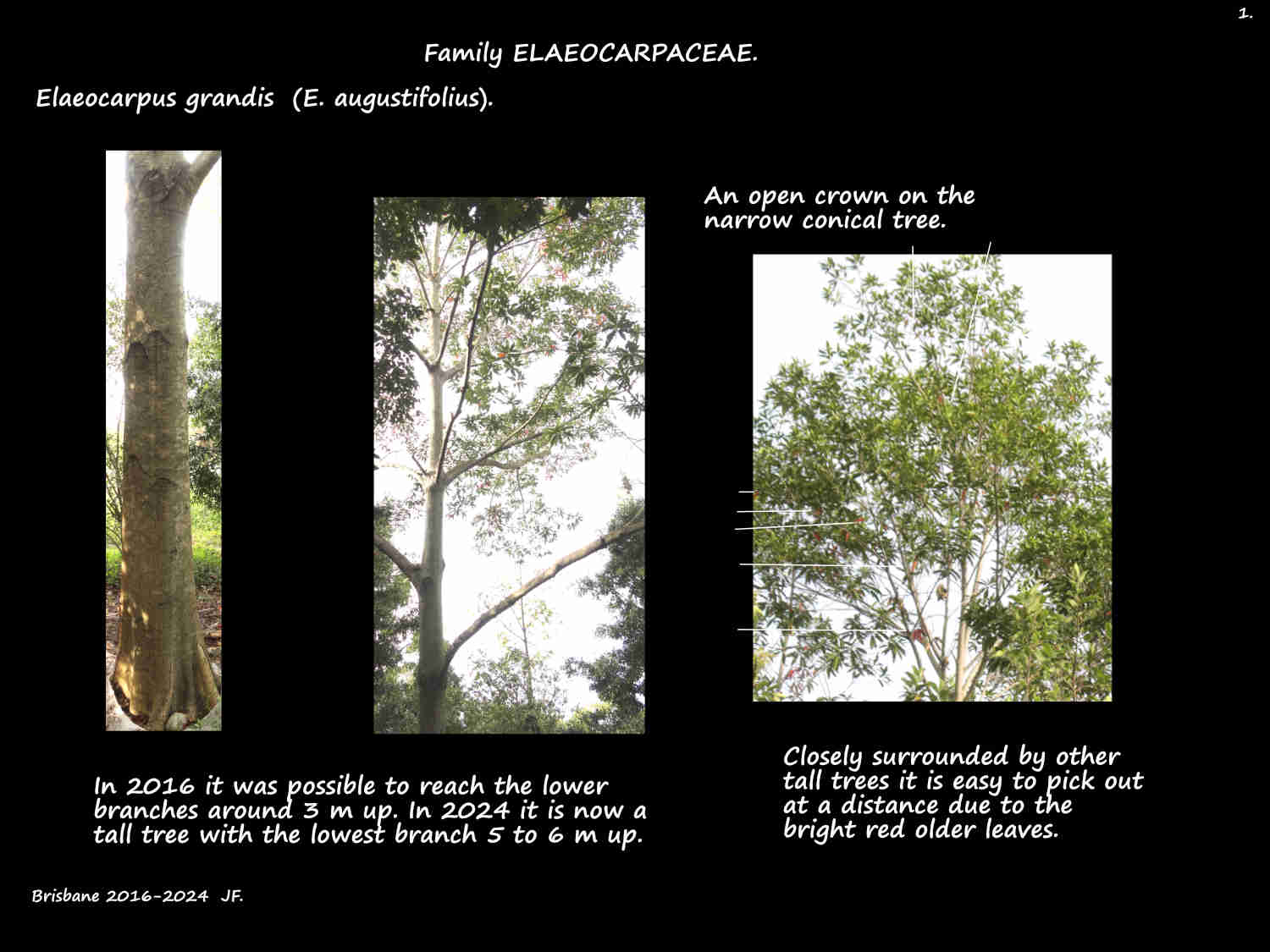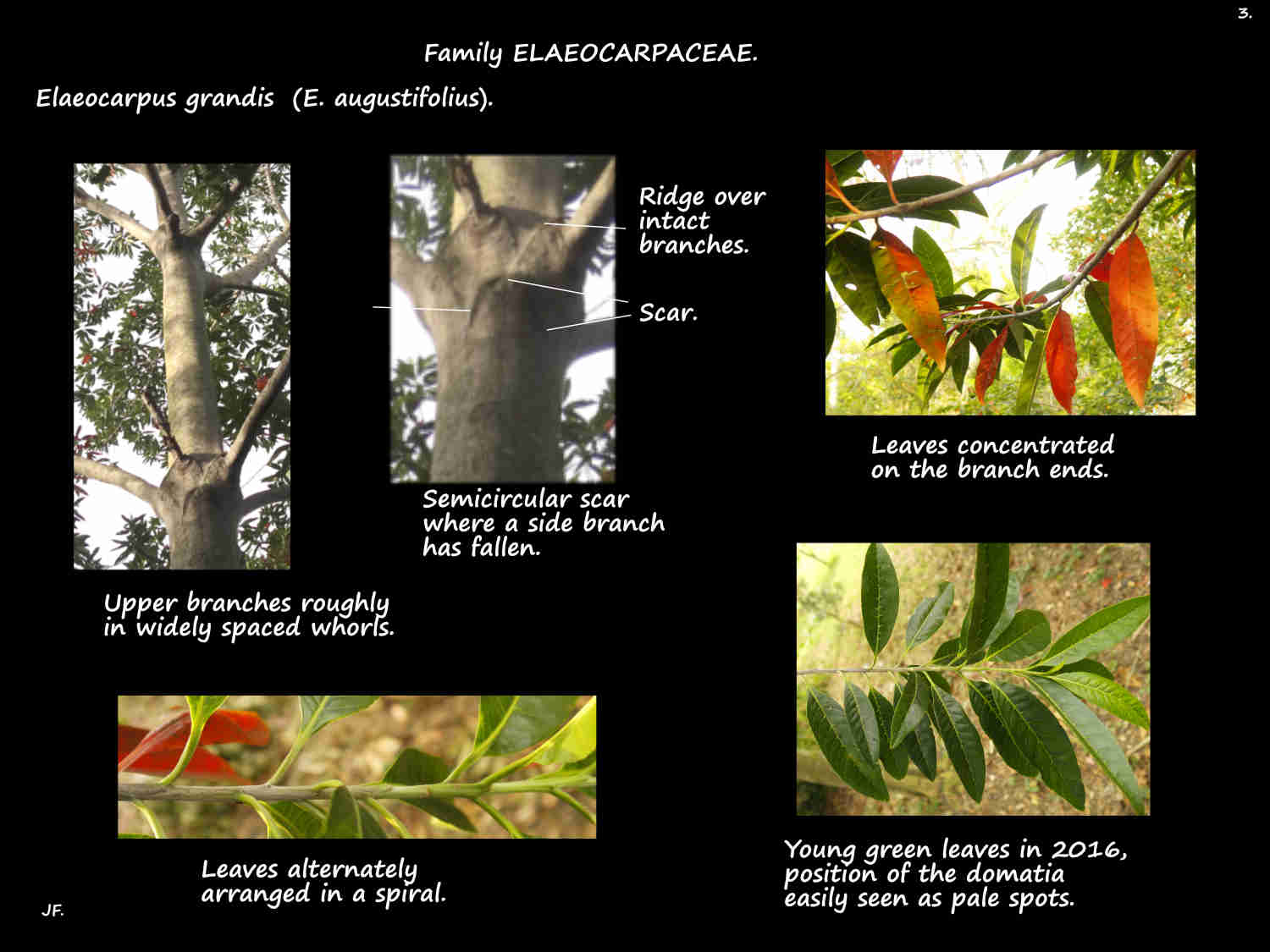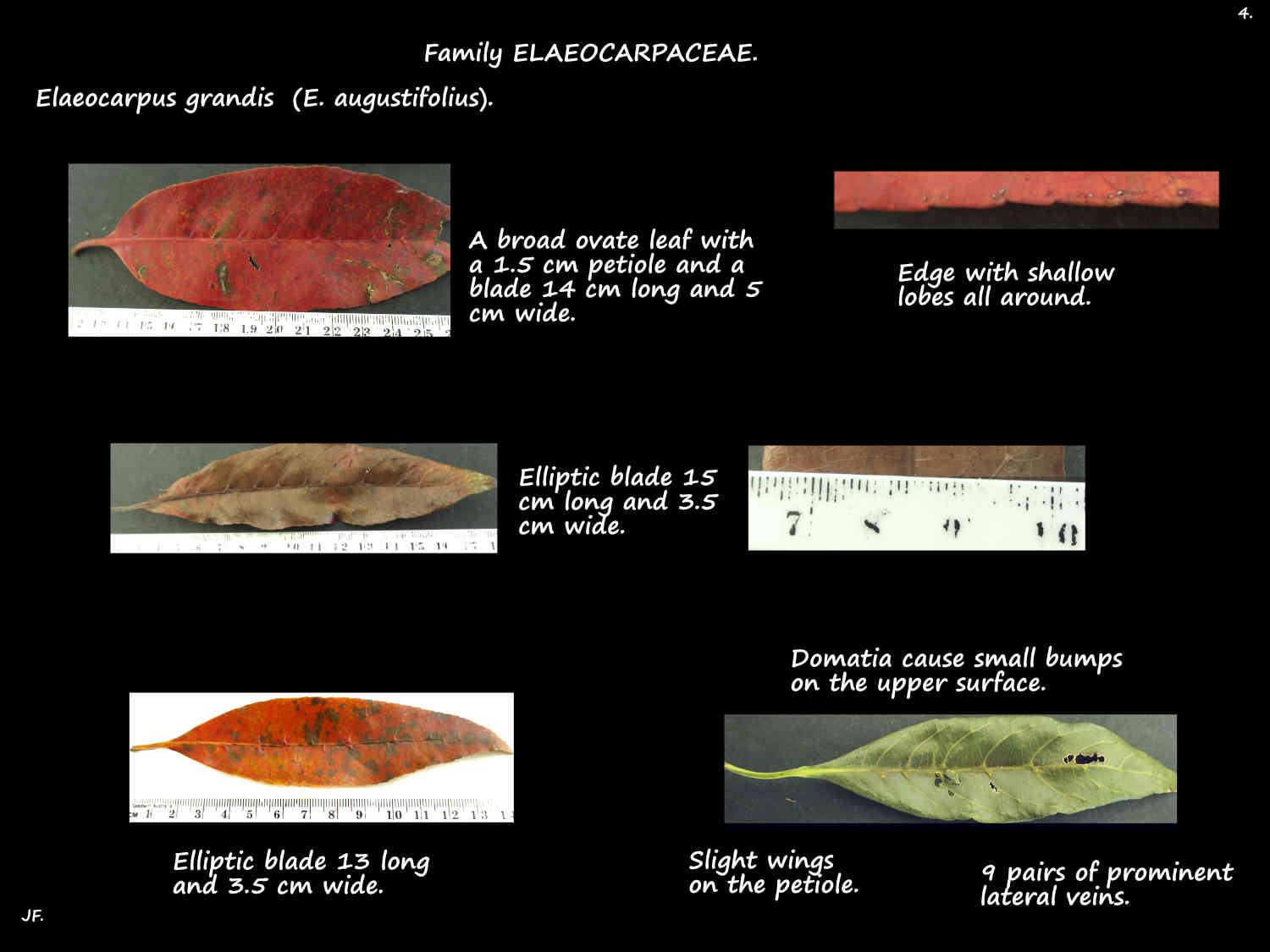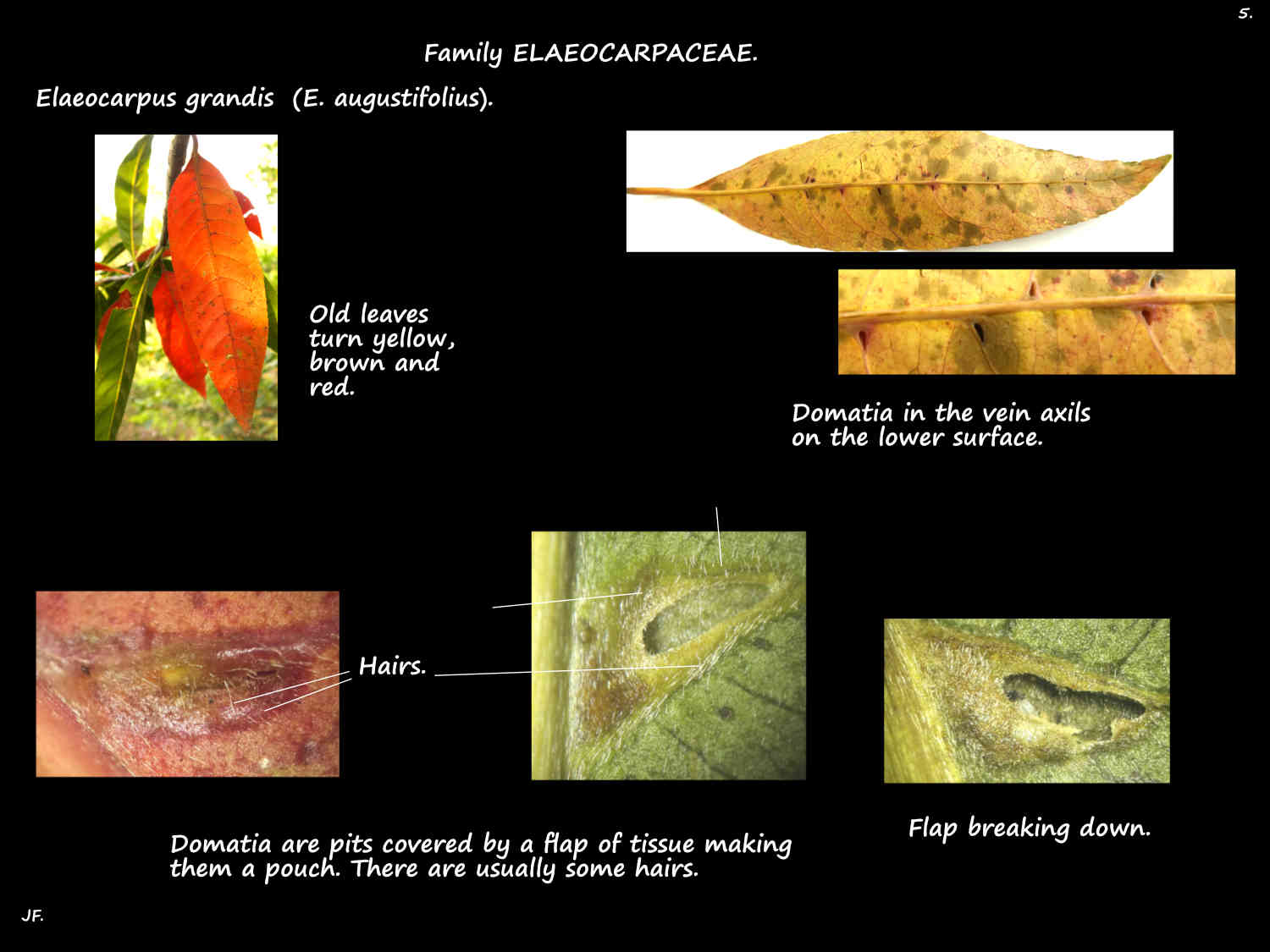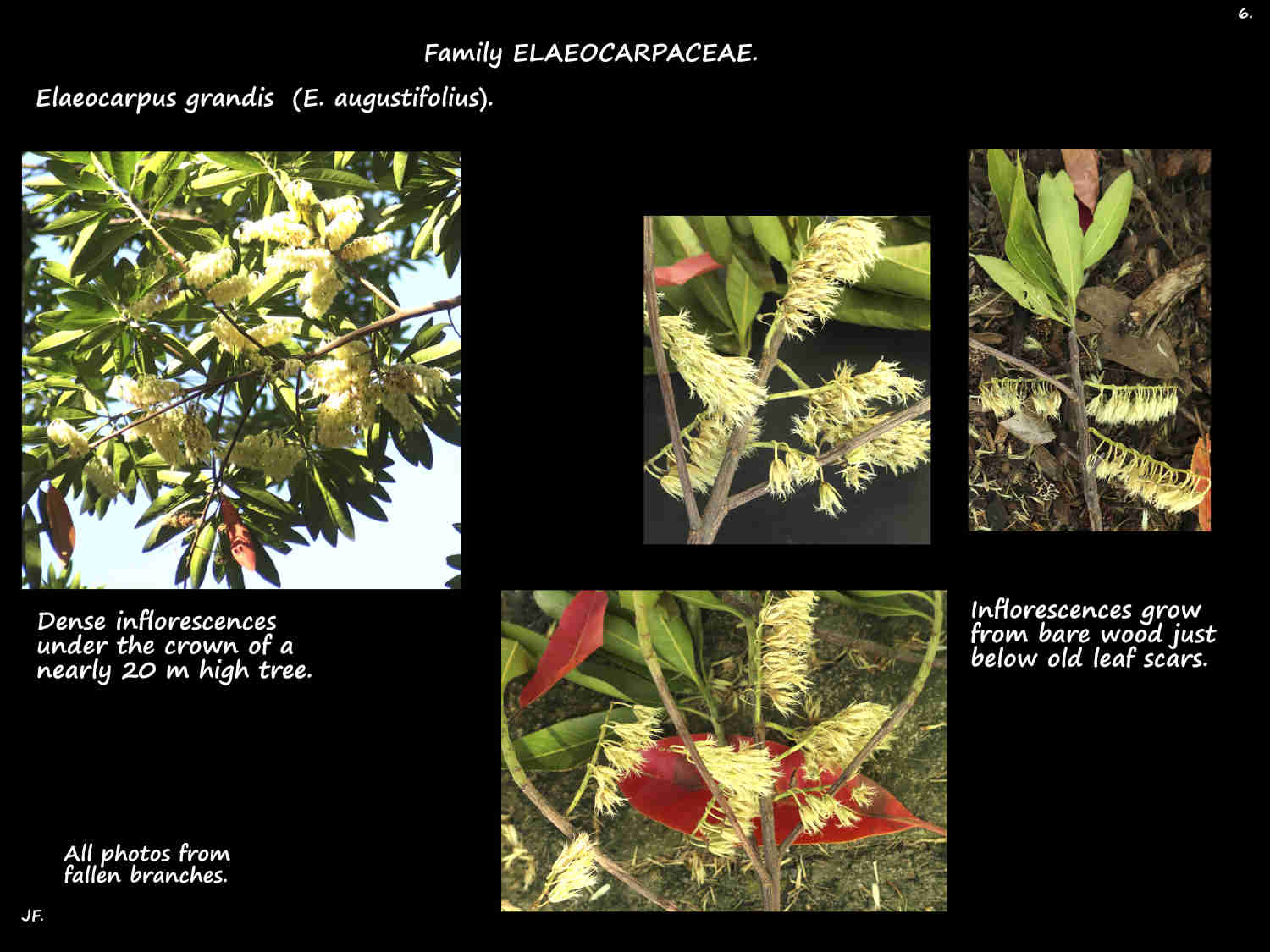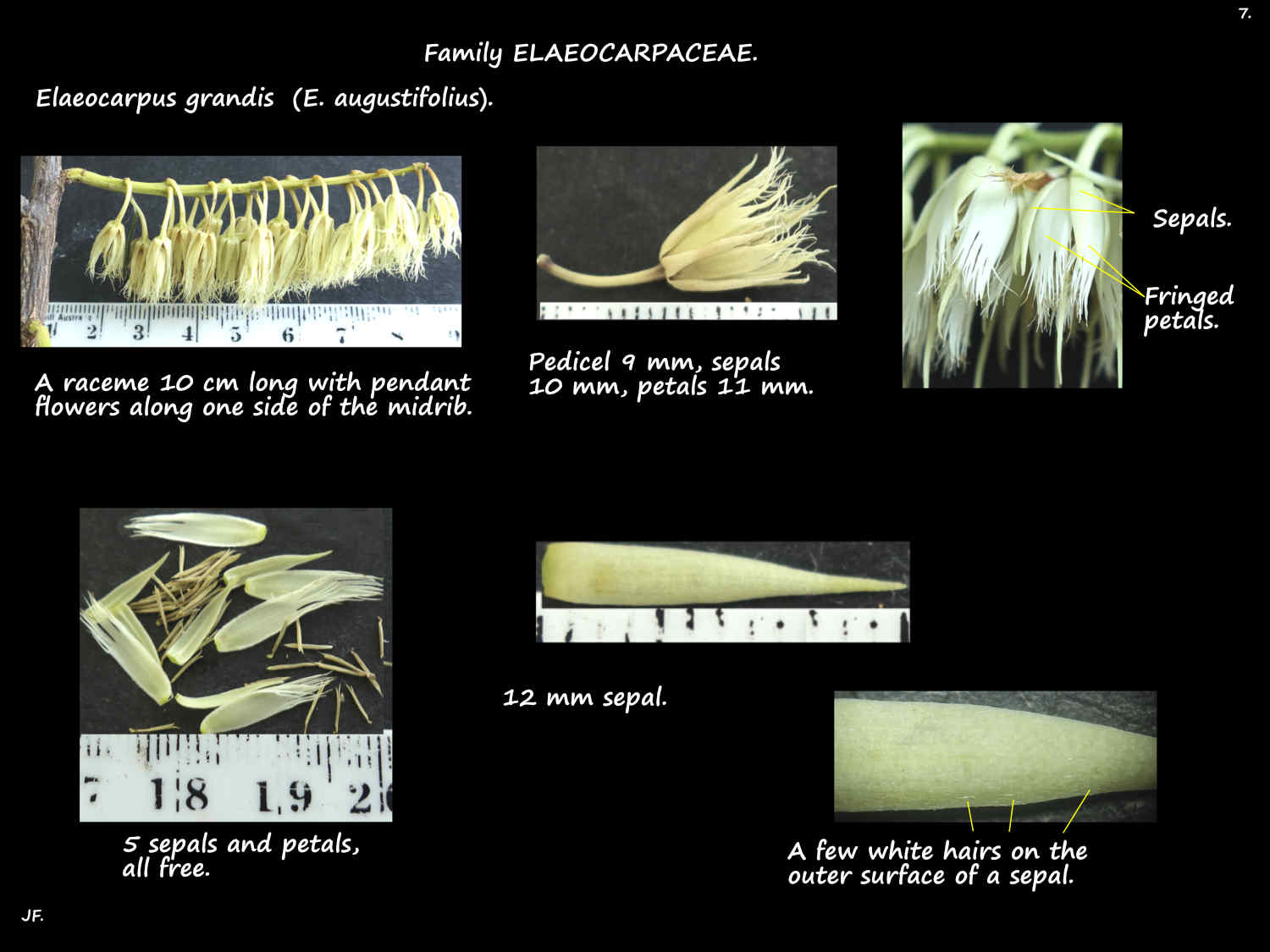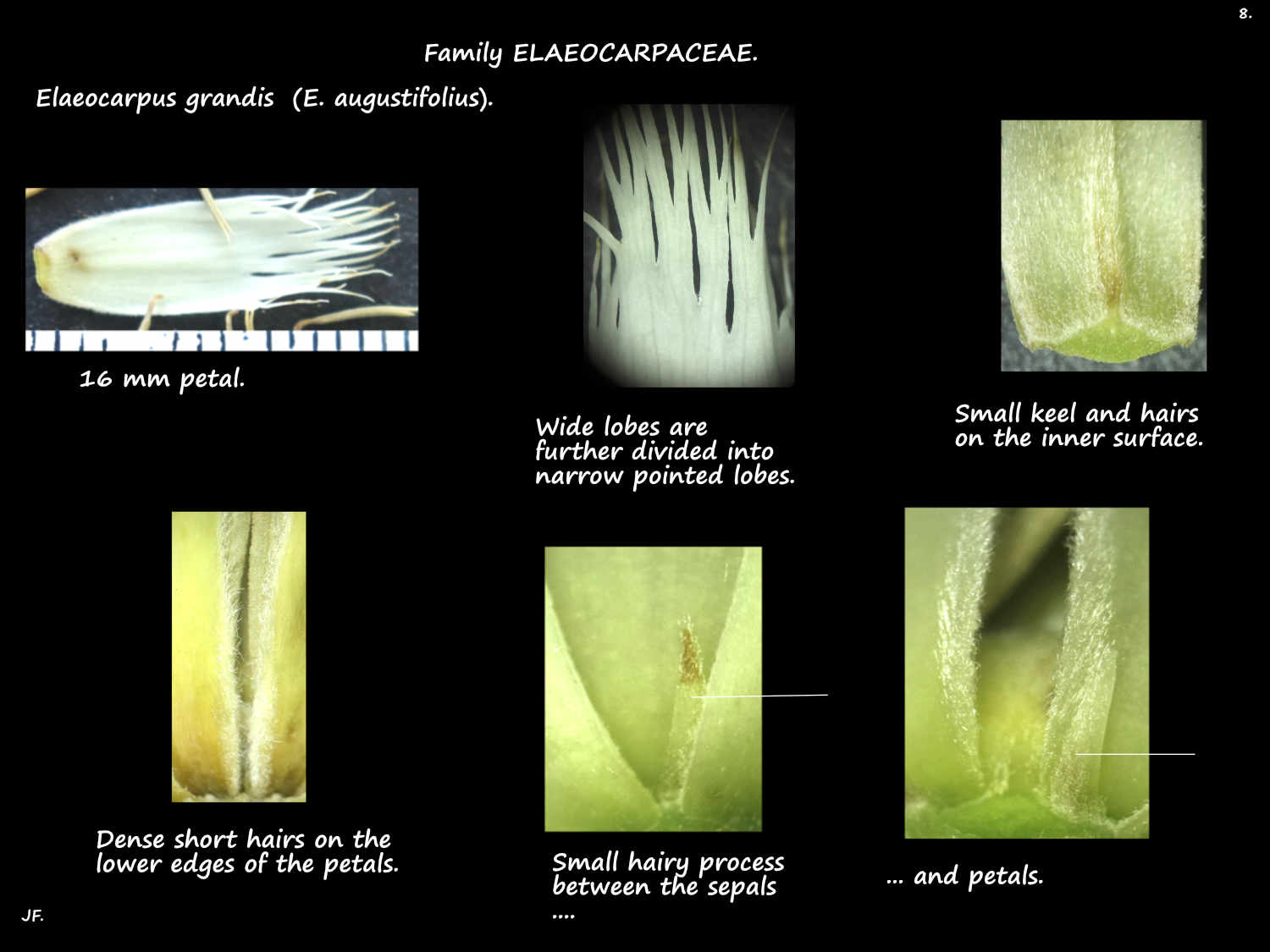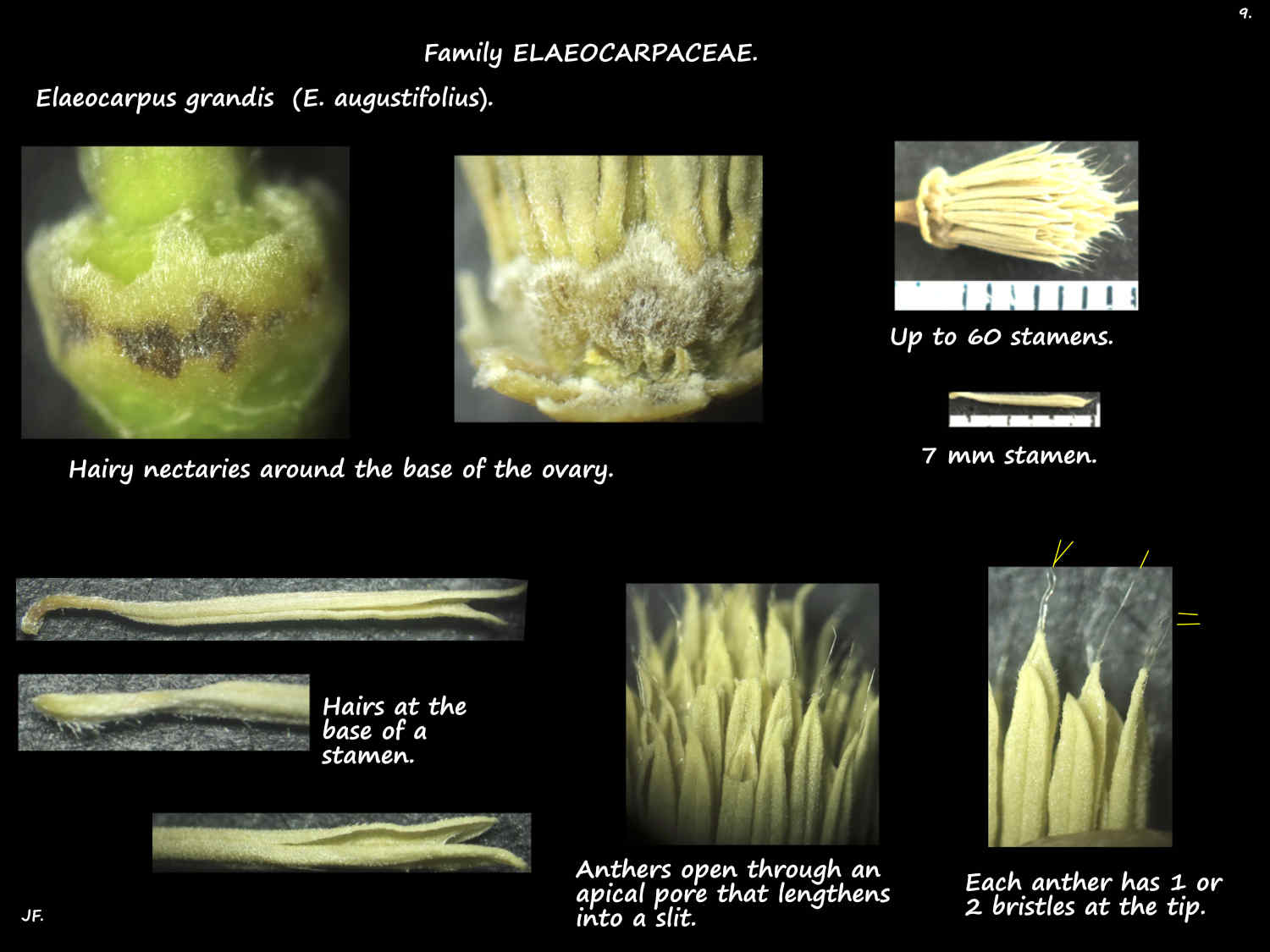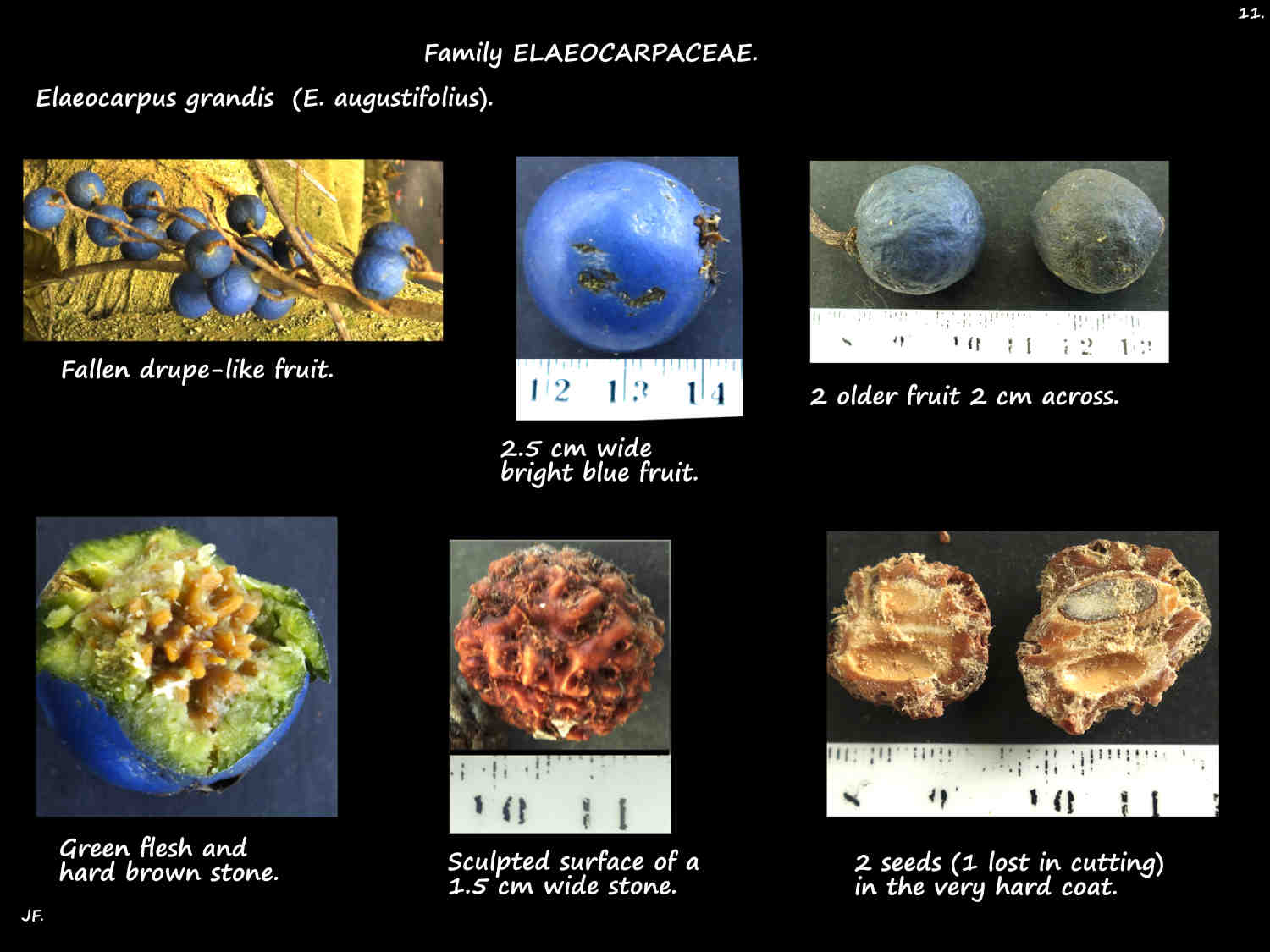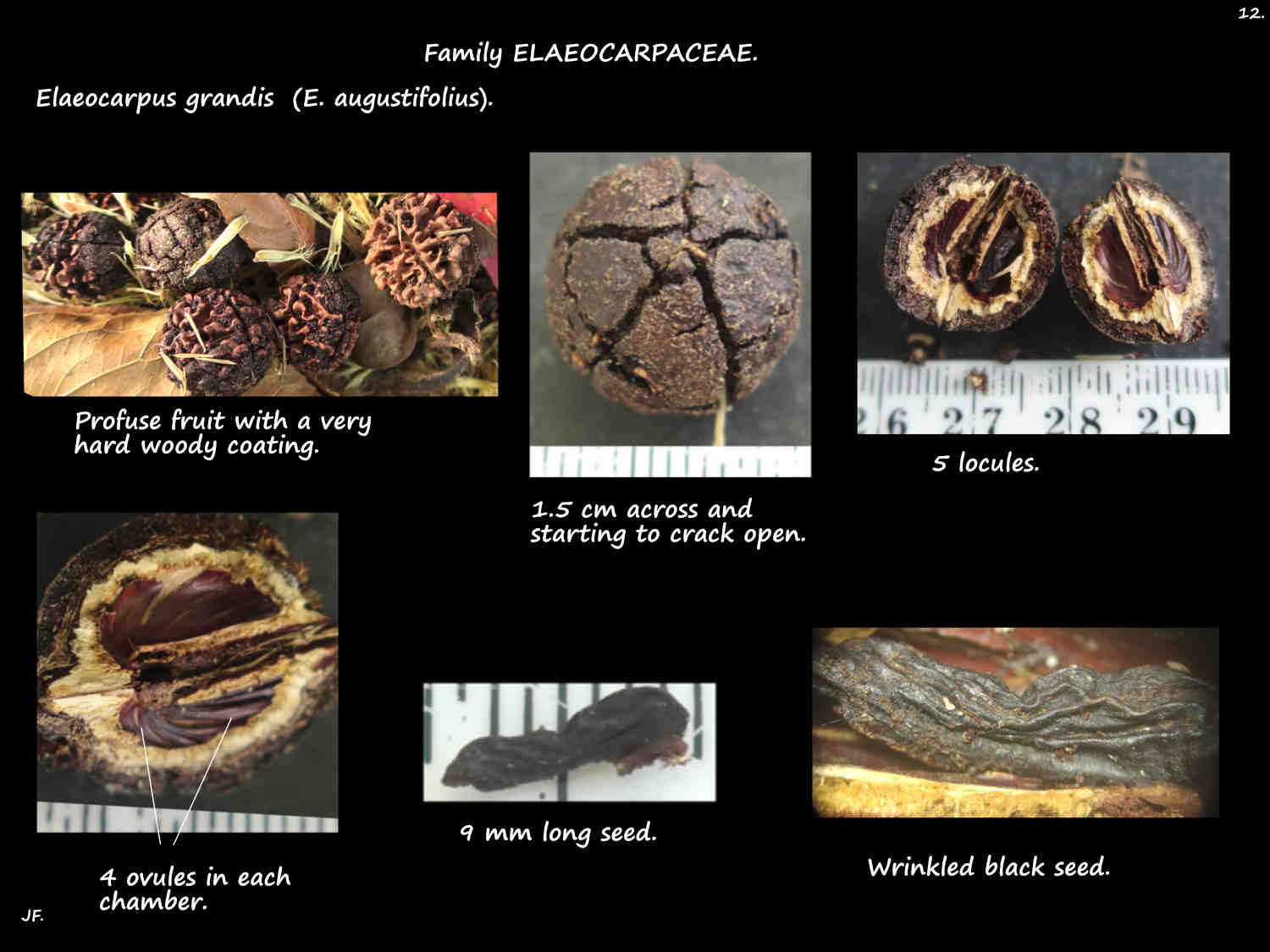The Blue Quandong is known as Eleaocarpus grandis by Plants of the World Online (Kew) as well as in Queensland.
It is equally well known as E. angustifolius in other places.
It is native to the rain forests along the coast of N. E. Australia including S. E. Queensland.
They are fast growing trees up to 35 or 40 m high.
The straight, cylindrical trunk develops large buttress roots.
Around 10 to 15 cm high they are only a few cms thick.
They spread for up to around 6 m in all directions.
On tall trees the lower few metres of the trunk are bare then the side branches tend to be in well spaced whorls.
The pale grey-brown bark has narrow, slightly raised vertical lines and old bark has vertical wrinkles.
New twigs may have some hairs.
The foliage on the crown is open with leaves mainly on the branch ends.
Trees are easily recognised from a distance due to the presence of some old bright red leaves.
The alternate leaves are on a petiole up to 2 cm long.
The base of the blade runs onto the petiole forming short very narrow wings.
There are 2 mm long stipules at the base of the petiole but they fall off very early.
The simple blades, up to almost 20 cm long can be oblong to elliptic.
They are up to 4 cm across and have a shallowly lobed edge all around (crenate).
There are more than 9 pairs of prominent lateral veins.
Domatia in the vein axils on the lower surface are visible with the naked eye.
They are pouches (pits with a flap of tissue over them) usually associated with some hairs.
They are seen on the upper surface as small bumps.
Young leaves and petioles may have some hairs that are often lost.
Inflorescences are racemes up to 10 cm long with pendulous flowers often only on one side of the midrib or rachis.
On racemes the lower flowers open first.
Inflorescences are on small twigs below the leaves or below old leaf scars – i.e. on bare wood (ramiflorous).
The around 14 bell-shaped flowers are on pedicels up to 1.5 cm long.
The calyx has 5 sepals around 11 mm long.
The 5 greenish-white petals are up to 15 mm long and 10 mm wide.
The oblong petals usually have a fringed end.
The tip is divided into 4 or 5, 5 mm long lobes that are themselves divided to give a total of around 16 narrow pointed lobes.
The petal and sepal bases, and the nectary lobes, all have short hairs.
The up to 60 stamens, on filaments 1 to 2 mm long have very short hairs.
The 5 anthers, around 5 mm long open through an apical pore that extends a short distance down the sides of the anther to form 2 lips.
There are bristles (awns) at the tip of the anther.
The small roughly spherical superior ovary has a lot of short and long white hairs especially at the top.
There are 5 (7) locules each with around 4 ovules.
The style, around 1.5 mm long has hairs at the base similar to those on the ovary.
The blue fruit, up to 3 cm across are drupe-like.
They have a thin layer of green flesh around a very hard, woody shell.
The surface of the stone has ridges, nodules and grooves (sculpted).
The skin changes from bright blue to greyish or black.
The 2 to 5 seeds are released when the shell rots away.
Flowers and fruit are often seen for around 9 months of the year.
J.F.
